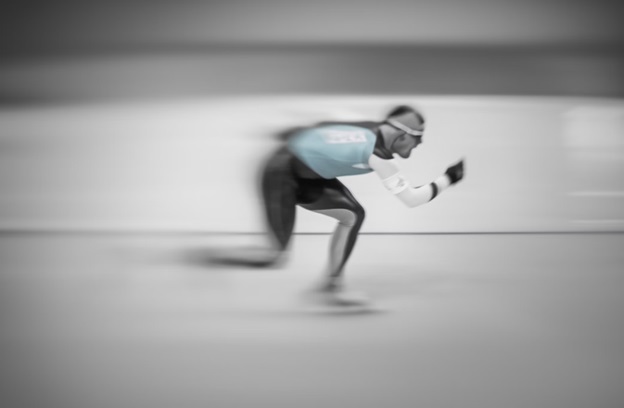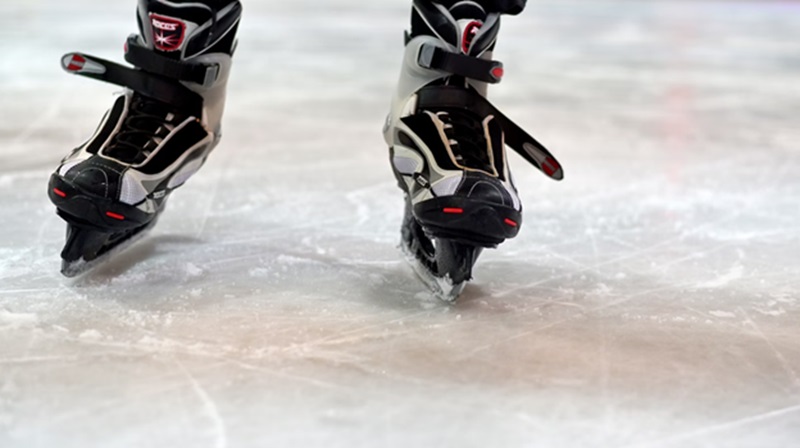
When skaters are executing speed skating as a sport, it’s hard to ignore their overridden importance in gliding elegantly and astonishingly across the ice. It’s spectacular to look at. But what not many people know is that there are two forms of speed skating. This article will look at the differences between Short Track and traditional speed skating, focusing on their race types and level of difficulty. Get ready for a deep dive into the world of ice skating!
What are Short Track and Traditional Speed Skating?
Traditional and Short Track Speed Skating are two exciting types of ice skating that have some major differences in their style, format, and even competition strategy. Short Track Speed Skating takes place in a smaller rink and requires greater focus on speed, quickness, and closeness to fierce competitors as the races are very competitive. Traditional Speed Skating occurs in a larger arena, which places more focus on smooth and fast gliding over longer distances in Traditional Speed Skating. It goes without saying that both forms display excellent skill and physical ability, but they are different in their own way.
And before we tell you about the most important differences, we would like to remind you that sometimes you need to take a break from physical activity. So, you can relax your body and soul in Canada or any other country by playing Plinko: https://melbet-ca.com/en/allgamesentrance/plinko! This is an exciting game in which players roll balls along a vertical field, hoping for a successful landing in sectors with different multipliers. Each throw is full of tension since the final result depends on the random deviations of the ball. The essence of the game is to predict which sector the ball will fall into, which makes it simple and exciting at the same time!
Key Differences in Race Format
The way races are set up for each category differs quite a bit, which changes not only the degree of difficulty but the skillset needed as well:
- Short Race Distances: The races in the Short Track competition are shorter than in Traditional Speed Skating, which ranges from 1,000 meters to 10,000 meters. Short Track races are usually between 500 – 1,000 meters.
- Multiple Competitors in One Race: Short Track events are typically more exciting as they feature 6 – 8 competitors per heat. In Traditional Speed Skating, the two-contestant format is the standard, and races are done against the clock for the best time.
- Course Turns: The 111-meter oval used in short-track racing is much tighter than the 400-meter course used in Traditional Speed Skating, which has wider and easier turns.
- Qualification Rounds: In Short Track events, skaters need to advance through multiple heats to get a chance at the finals. The advanced process in Traditional Speed Skating is much simpler – it consists of several time trials, with the fastest time winning the next round.
These differences offer each discipline its special character and require particular strategies. However, strategies are also required in betting. So, by visiting Canada UFC betting, you will be able to make your predictions even more accurately using historical statistics. This will help you implement your most accurate strategies and win more often, so join us!
Start and Finish Differences
The starts and finishes in Short Track and Traditional Speed Skating differ in terms of strategy and execution. In Short Track, the start is energetic and sometimes wild. All the skaters are set to go off in a bunch, and there can easily be a fight for position in the first few seconds of the race. The way Short Track athletes finish is very remarkable as well since skaters rush to the edge of the rink. Skaters can often find themselves crossing the finishing line within seconds of each other, creating an element of drama and suspense.
On the other hand, in traditional speed skating, there is a set start for each athlete, who is parted by a certain time frame, so starts are more measured. This strategy limits the possibility of crashes, yet it shifts a lot of trust in the single skater so that they do not slow down their pace during the entire race. Finishes tend to require more endurance, and a skater has to go through fatigue to improve on their time.
Training and Physical Demands for Athletes
Physical preparations for athletes in Short Track or Traditional Speed Skating differ greatly. Let’s take a brief look at the primary requirements for each sport:
- Endurance: Traditional Speed Skating athletes prepare for lengthy endurance races that require aerobic conditioning to last several kilometers at top speed.
- Speed and Agility: Short Track focuses on an athlete’s acceleration capacity, rapid speed, and agility to maneuver tight corners and compete with many skaters at the same time.
- Strength and Power: Leg muscle power is essential in both disciplines. However, Short Track skaters require power for rapid acceleration, whereas Traditional skaters need muscle strength to sustain their speed.
- Mental Focus: Both sports demand considerable mental endurance, unlike other sports. Short-track skaters have to focus on not colliding, and Traditional skaters have to focus on completing a distance.
These various physical aspects make sure that the athlete has to concentrate and train hard on a specific discipline.

The Ice Awakens: A Final Lap
Last but not least, it does not matter if you prefer the action-packed Short Track or the strategy-rich Traditional Speed Skating because both sports have their own unique appeal. Each sport tests an athlete’s physical and mental abilities to the extreme and, in the end, displays the strength, accuracy, and love of skating. Subsequently, when observing a skater on the ice, recognize that so much more is occurring than what is depicted. This sport is beyond just feeling the speed and adrenaline rush. It is a sport that sets your heart on fire!

